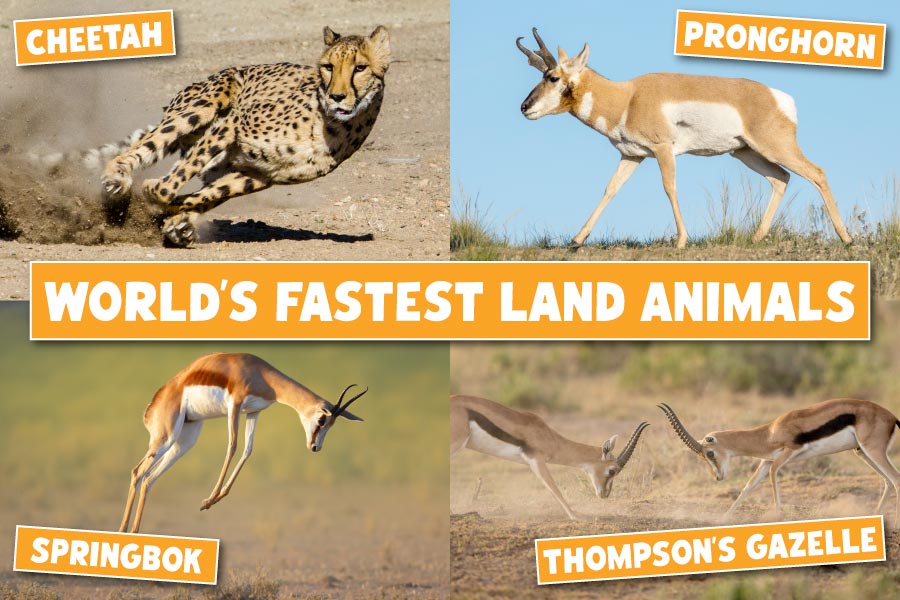The fastest land animals in the world are the cheetah, the pronghorn, and various antelope species, including Thompson’s gazelle, goitered gazelle and springbok. Other fast animals include hares, kangaroos, horses, bison and the giraffe, zebra and African wild dog. Domestic animals such as the quarter horse and greyhound have been selectively for speed.
On this page you'll meet these and many other fast land animals...
Page Index
Fast Animals - Introduction
Speed is an adaptation seen in both predators and prey animals. An example of an “evolutionary arms race”, prey animals evolve the ability to run at high speeds in order to evade predators, while predators evolve the same ability in order to catch fast-moving prey.
Adaptations Of Fast Animals
An animal that is adapted for running is said to be "cursorial". The animals in the list below all have numerous adaptations for a cursorial lifestyle. Examples of adaptations of fast animals include:
- Streamlined Bodies: Many fast animals have bodies that are streamlined for efficient movement through their environment.
- Powerful Musculature: Strong muscles are key for rapid acceleration and maintaining high speeds.
- Specialized Limbs: Many fast animals have limbs adapted for speed. For example, cheetahs have long, slender legs and non-retractable claws that grip the ground like cleats. Kangaroos have spring-loaded tendons in their hind limbs that store and release energy for jumping. The long legs of antelopes and horses allow for sustained high speeds.
- Highly Efficient Respiratory and Cardiovascular Systems: To sustain high speeds, animals need to deliver large amounts of oxygen to their muscles. Animals like the pronghorn antelope have large lungs and a powerful heart to pump blood efficiently.
- Tail for Balance and Steering: Animals like cheetahs use their tails as a rudder for balance and steering during high-speed chases.
- Energy Efficiency & Thermoregulation: Fast animals such as pronghorns, wildebeest, and kangaroos are adapted to be extremely energy-efficient, and can sustain a high speed over large distances. Thermoregulation – the ability to cope with the high temperatures produced by running – also plays a part in how fast, and for how long, an animal can run.
Fastest Land Animals List
Cheetah

- Maximum speed: 98 km/h; 61 mph
- Scientific Name: Acinonyx jubatus
- Family: Felidae
- Weight: 21-72 kg (46-159 lb)
- Where Found: Mainly in Eastern and Southern Africa; some small populations in Iran
- Conservation Status: Vulnerable
The cheetah is renowned for being the world’s fastest land animal, capable of speeds up to 98 km/h / 61 mph in short bursts (some estimate the cheetah’s maximum speed to be closer to 75 mph).
Built for speed, the cheetah has a slender, long-legged body with blunt, semi-retractable claws. Its long tail acts as a balance when the cat makes sharp turns during pursuits. Its main prey is mid-sized antelopes, which are themselves among the world’s fastest land animals.
The cheetah’s distinctive black spots on golden fur and black, tear-like facial streaks make it easily recognizable.
Discover More With Active Wild
You can find out more about this animal on this page: Cheetah Facts
Pronghorn
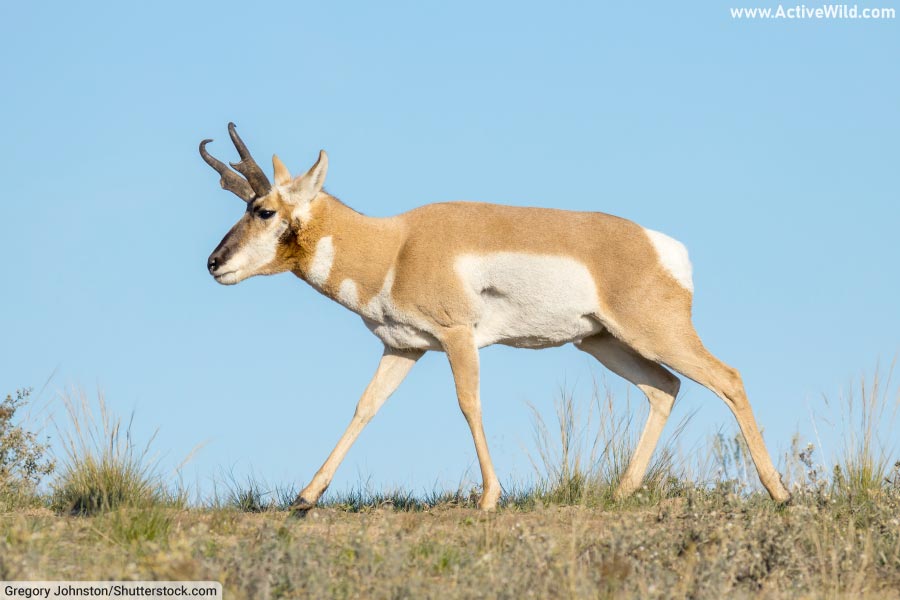
- Maximum speed: 89 km/h; 55 mph
- Scientific Name: Antilocapra americana
- Family: Antilocapridae
- Weight: 40-65 kg (88-143 lb)
- Where Found: North America, primarily in the United States and Canada
- Conservation Status: Least Concern
Pronghorns are unique to North America and are famous for their speed, being considered the world’s second-fastest land animals, after the cheetah.
Although known as the “pronghorn antelope”, the pronghorn is not a true antelope; it’s closest living relatives are the giraffe and okapi.
The pronghorn can sustain high speeds longer than the cheetah and has unique hollow hair and a large windpipe and heart to aid its endurance. This light, golden-brown mammal has white fur on its rump, sides, chest and throat. It is named for its distinctively-shaped horns.
Discover More With Active Wild
You can find out more about this animal on this page: Pronghorn Facts
Goitered Gazelle

- Maximum speed: 89 km/h; 55 mph
- Scientific Name: Gazella subgutturosa
- Family: Bovidae
- Weight: 17-43 kg (37-95 lb)
- Where Found: Spread across central Asia, from the Caspian Sea to Mongolia
- Conservation Status: Vulnerable
The goitered gazelle is named for the male's prominent neck swelling, which is more noticeable during the mating season (a goitre is a medical condition causing a swollen neck).
This fast-moving antelope has a reddish-buff summer coat and a much paler, greyish-brown winter coat. The goitered gazelle is adapted to arid environments and is known for its speed and agility.
Discover More With Active Wild
You can see more African animals on this page: African Animals
Thomson’s Gazelle

- Maximum speed: 89 km/h; 55 mph
- Scientific Name: Eudorcas thomsonii
- Family: Bovidae
- Weight: 15-35 kg (33-77 lb)
- Where Found: Predominantly in East Africa, especially in Kenya and Tanzania
- Conservation Status: Least Concern
Thomson's gazelles are one of the most common types of gazelles in Africa. Named after British explorer Joseph Thomson, these relatively small antelopes are known for their agility and speed, and are capable of running at bursts of up to 50-60 mph.
Also known as “Tommies”, Thompson’s gazelles have a distinctive appearance with a light brown coat, white underparts, and a black stripe on their sides.
Discover More With Active Wild
You can see more African animals on this page: African Animals
Springbok

- Maximum speed: 89 km/h; 55 mph
- Scientific Name: Antidorcas marsupialis
- Family: Bovidae
- Weight: 27-42 kg (59-93 lb)
- Where Found: Southwestern Africa, particularly in Namibia, Botswana, Angola, and South Africa
- Conservation Status: Least Concern
The springbok is a medium-sized brown and white gazelle known for its unique jumping display, which is known as “pronking”. It is the national animal of South Africa.
This medium-sized antelope is characterized by a reddish-brown coat with a white face and underbelly and a dark stripe running from their eyes to the corner of their mouth.
Adapted to dry areas, the springbok can survive without water for long periods.
Discover More With Active Wild
You can find out more about this animal on this page: Springbok Facts
Antelopes (General)
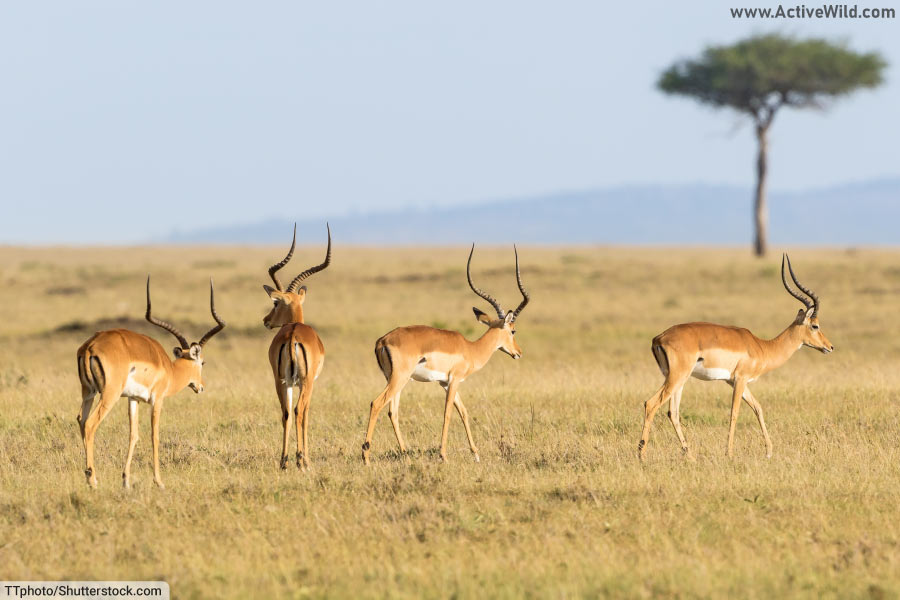
- Family: Bovidae
Antelopes are graceful and agile herbivores found primarily in Africa and Asia. Known for their slender bodies, elegant horns, and exceptional speed, they inhabit a range of environments from savannas to forests.
These social animals are a vital part of their ecosystems, and rely on their speed to evade predators.
Examples of fast antelopes not mentioned elsewhere on this list include the tsessebe, Grant's gazelle, hartebeest, impala, wildebeest, onager and eland.
Discover More With Active Wild
You can find out more about wildebeest on this page: Wildebeest Facts
Hare

- Maximum speed: 80 km/h; 50 mph
- Scientific Name: Lepus europaeus (European Hare)
- Family: Leporidae
- Weight: 3-5 kg (6.6-11 lb)
- Where Found: Widely distributed across Europe and parts of Asia; introduced to North America and other regions
- Conservation Status: Least Concern
Hares are larger than rabbits, with longer ears and legs. They are adapted for fast running, reaching speeds of up to 50 mph. Unlike rabbits, hares are born fully-furred and with open eyes.
Hares are generally solitary and nocturnal, with a diet consisting mainly of grasses and herbs.
Discover More With Active Wild
Is a hare a rodent? Find out on this page: Are Rabbits Rodents?
Blackbuck

- Maximum speed: 80 km/h; 50 mph
- Scientific Name: Antilope cervicapra
- Family: Bovidae
- Weight: 20-57 kg (44-125 lb)
- Where Found: Native to the Indian subcontinent; introduced in parts of North America
- Conservation Status: Least Concern
The blackbuck is an antelope native to India and Nepal. Males have distinctive spiraled horns and a striking dark brown to black and white coat, while females are fawn-colored and lack horns.
Blackbucks inhabit grassy plains and slightly forested areas.
Discover More With Active Wild
You can see more African animals on this page: African Animals
Cougar
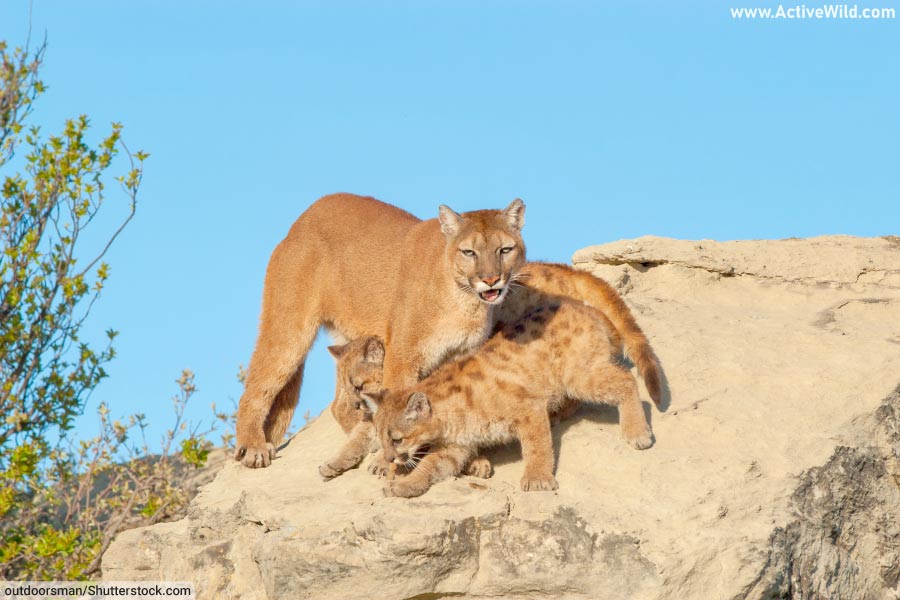
- Maximum speed: 80 km/h; 50 mph
- Scientific Name: Puma concolor
- Family: Felidae
- Weight: 53-100 kg (116-220 lb)
- Where Found: A wide range in the Americas, from the Canadian Yukon to the southern Andes of South America
- Conservation Status: Least Concern
Also known as the mountain lion or puma, the cougar is a large, solitary cat found in the Americas. This adaptable species is able to thrive in many different habitats and is known for its strength and agility.
The cougar is primarily an ambush predator that feeds on deer and other mammals. It is elusive and primarily nocturnal.
Discover More With Active Wild
You can find out more about this animal on this page: Cougar Facts
Lion
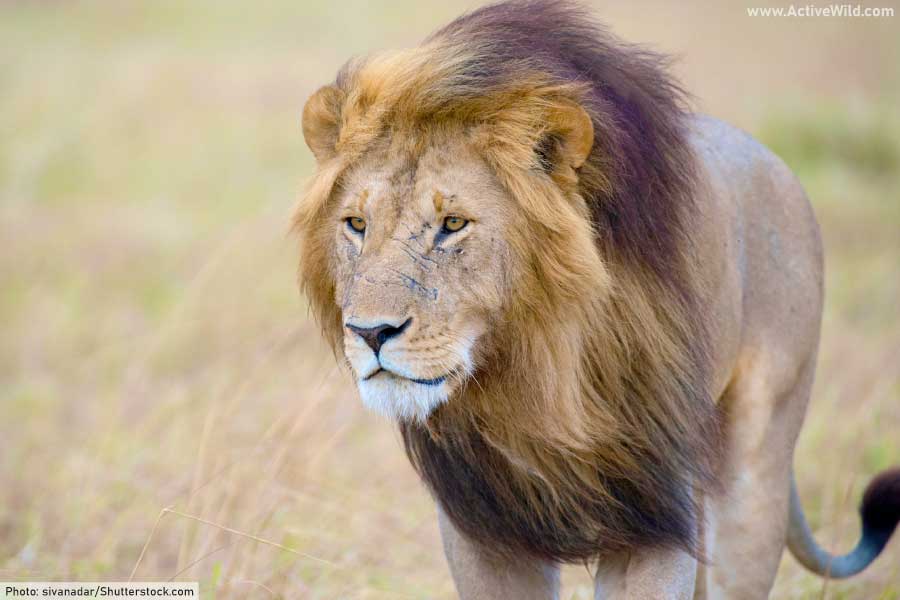
- Maximum speed: 74 km/h; 46 mph
- Scientific Name: Panthera leo
- Family: Felidae
- Weight: Females: 120-182 kg (265-400 lb), Males: 150-250 kg (330-550 lb)
- Where Found: Sub-Saharan Africa and a small population in Western India (Asiatic lion)
- Conservation Status: Vulnerable
The lion is the second-largest living cat species (after the tiger). It is distinguished by its powerful build and the majestic mane of the male.
Lions are the most social of all cats, living in groups known as prides. A pride typically consists of a number of related females and a smaller number of males (often just one).
Lions are native to Africa, with a small population in the Gir Forest of India (Asiatic lions). They inhabit a variety of habitats, from grasslands to savannas, and even scrub forests.
As apex predators, lions play a crucial role in their ecosystem by helping to control the population of large herbivores.
Discover More With Active Wild
You can find out more about this animal on this page: Lion Facts
Horse

- Maximum speed: 70.8 km/h; 44 mph
- Scientific Name: Equus ferus caballus
- Family: Equidae
- Weight: Approximately 380-1000 kg (840-2200 lb), varying greatly with breed
- Where Found: Worldwide domestication; wild populations in regions like Mongolia
- Conservation Status: Domesticated; varies for wild subspecies
Horses have been integral to human societies for thousands of years, being used for transportation, work, and sport. Known for their speed and endurance, horses have a well-developed sense of balance and a strong fight-or-flight response.
Horse breeds vary greatly in size and build, from small ponies to large draft horses. One of the fastest breeds of horse is the American quarter horse, which is capable of reaching speeds of up to 44 mph / 70.8 km/h.
Discover More With Active Wild
You can find out more about a wild relative of the domestic horse on this page: Przewalski’s Horse Facts
American Bison
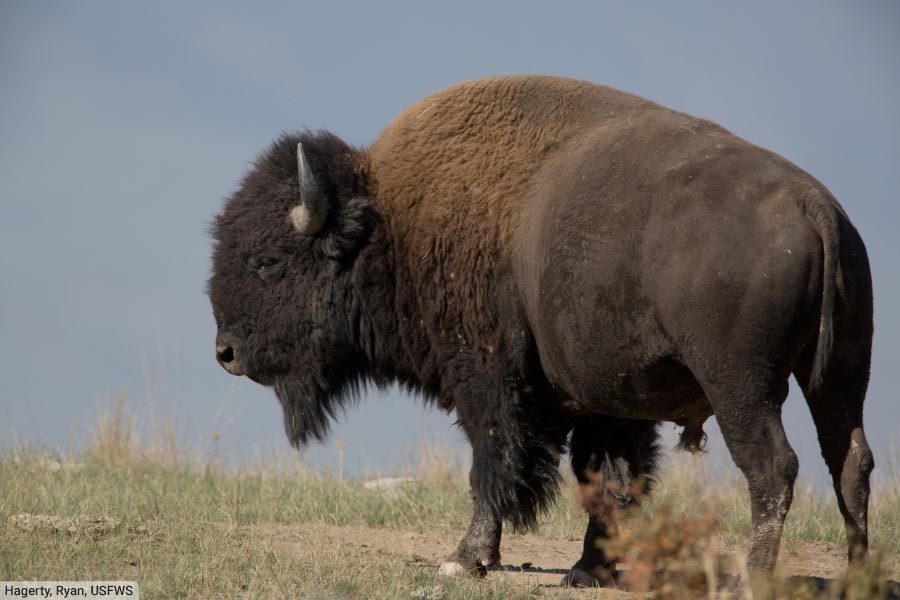
- Maximum speed: 70 km/h; 43.5 mph
- Scientific Name: Bison bison
- Family: Bovidae
- Weight: 318-1,000 kg (700-2,200 lb)
- Where Found: North America, particularly in the United States and Canada
- Conservation Status: Near Threatened
The American bison is the largest mammal found in North America. This iconic American animal has a massive head, a humped shoulder, and a shaggy coat.
Historically, bison played an essential role in the ecology of the Great Plains. Conservation efforts have brought the species back from the brink of extinction.
Large, powerful animals, bison have few predators. The ability to run at speeds of up to 45 mph provides additional protection against their main predators, wolves.
Discover More With Active Wild
You can find out more about this animal on this page: American Bison Facts
(Common) Ostrich
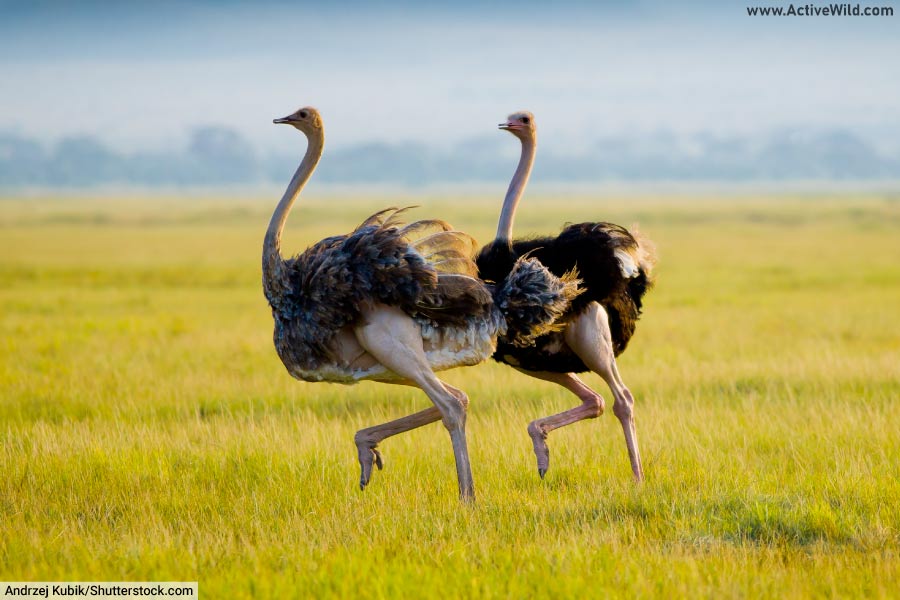
- Maximum speed: 70 km/h; 43.5 mph
- Scientific Name: Struthio camelus
- Family: Struthionidae
- Weight: 63-145 kg (139-320 lb)
- Where Found: Native to large parts of Africa
- Conservation Status: Least Concern
The ostrich is the world's largest bird. It makes up for its inability to fly with its incredible running ability; the common ostrich can reach speeds of up to 44 mph, making it not only the fastest bird on land, but also one of the fastest living land animals.
The ostrich has a long neck and legs and can cover 3-5 meters in a single stride. It lays the largest eggs of any living land animal.
There are two ostrich species: the common ostrich, and the Somali ostrich, which is found in the Horn of Africa, and has blue, rather than pink, skin.
Discover More With Active Wild
You can find out more about this animal on this page: Ostrich Facts
Greyhound

- Maximum speed: 70 km/h; 43.5 mph
- Scientific Name: Canis lupus familiaris (Breed of dog)
- Family: Canidae
- Weight: 27-40 kg (60-88 lb)
- Where Found: Worldwide
- Conservation Status: Not applicable (domesticated species)
Dogs are domestic animals descended from wolves (dogs and wolves are generally considered to be the same species, and can interbreed). Over thousands of years, dogs have been selectively bred to perform certain roles.
Greyhounds are a breed of dog known for their speed and slender, athletic build. They can reach speeds of up to 45 mph, making them one of the fastest dog breeds.
Greyhound racing is popular pastime in some parts of the world, and these fast-moving dogs are also popular pets.
Discover More With Active Wild
You can find out more about dogs on this page: Dog Facts
Kangaroo

- Maximum speed: 70 km/h; 43.5 mph
- Scientific Name: Macropus (genus)
- Family: Macropodidae
- Weight: Varies by species, Red Kangaroo: up to 90 kg (198 lb)
- Where Found: Australia
- Conservation Status: Varies by species
Kangaroos are marsupials with powerful hind legs adapted for leaping. They are a symbol of Australia and are the only large animals to use hopping as their primary means of locomotion.
Kangaroos are herbivores and most species are nocturnal or crepuscular (active at dawn and dusk). Like all marsupials, females have pouches in which their young (known as joeys) complete their postnatal development.
Discover More With Active Wild
You can find out more about this animal on this page: Kangaroo Facts
Plains Zebra

- Maximum speed: 70 km/h; 43.5 mph
- Scientific Name: Equus quagga
- Family: Equidae
- Weight: 175-385 kg (385-849 lb)
- Where Found: Eastern and Southern Africa
- Conservation Status: Near Threatened
The plains zebra is the most common and geographically widespread of the three species of zebra. Characterized by its black-and-white striped coat, each individual's stripes are unique. Zebras live in groups and are known for their migratory behavior. They are primarily grazers and can survive in a variety of habitats, including grasslands and savannas.
Discover More With Active Wild
You can find out more about this animal on this page: Plains Zebra Facts
African Wild Dog
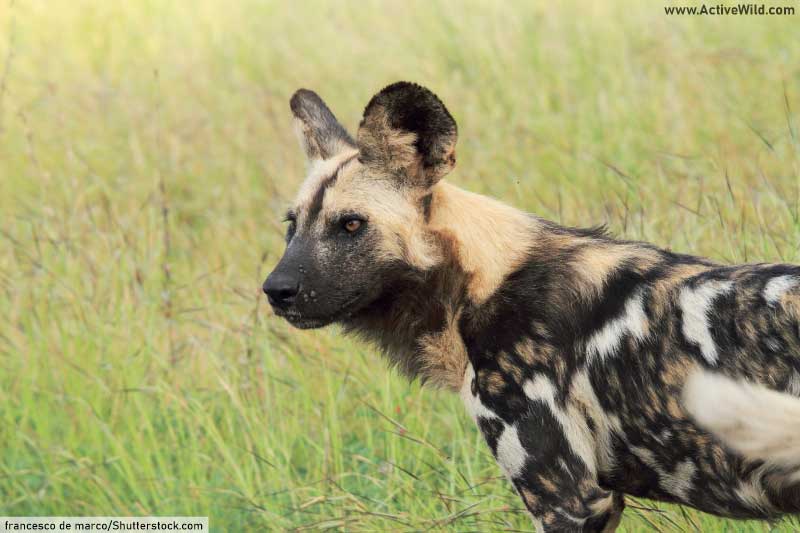
- Maximum speed: 66 km/h; 41 mph
- Scientific Name: Lycaon pictus
- Family: Canidae
- Weight: 20-30 kg (44-66 lb)
- Where Found: Sub-Saharan Africa
- Conservation Status: Endangered
African wild dogs are members of the dog family known for their unique coat patterns, remarkable hunting tactics, and social structure. They have large, rounded ears and a colorful patchwork coat.
A highly social species, African wild dogs live in packs led by a dominant pair. Known for their speed and endurance in hunting, the pack works cooperatively to catch prey, primarily antelopes. Their population is declining due to habitat loss, human conflict, and disease.
Discover More With Active Wild
You can find out more about this animal on this page: African Wild Dog Facts
Elk
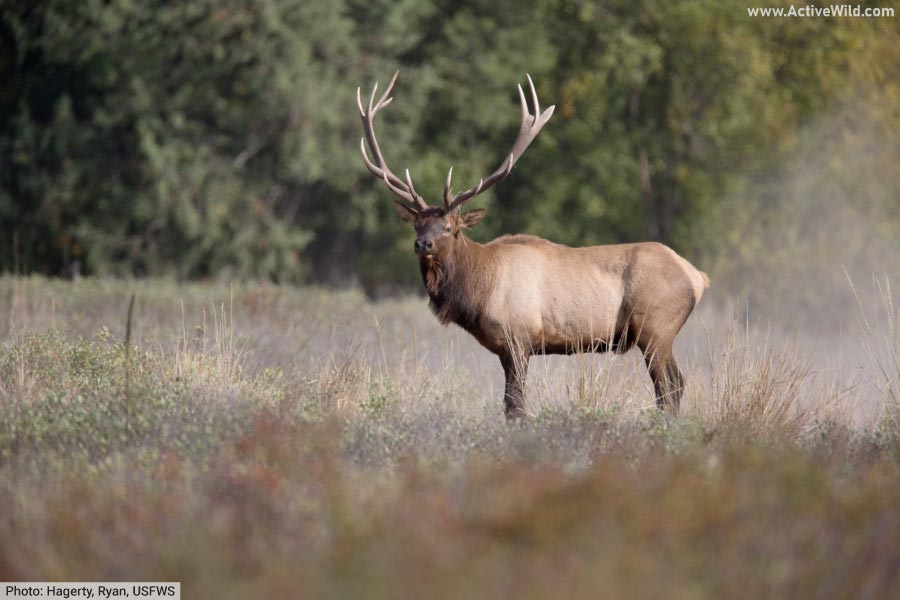
- Maximum speed: 64 km/h; 40 mph
- Scientific Name: Cervus canadensis
- Family: Cervidae
- Weight: 230-450 kg (507-992 lb) for males, 225-241 kg (496-531 lb) for females
- Where Found: North America and eastern parts of Asia
- Conservation Status: Least Concern
The elk is one of the largest members of the deer family. Each year, males grow and shed impressive antlers, which are used to fight other males during the mating season.
Elks are herbivores, feeding on grasses, plants, leaves, and bark.
Discover More With Active Wild
You can find out more about this animal on this page: Elk Facts
Tiger
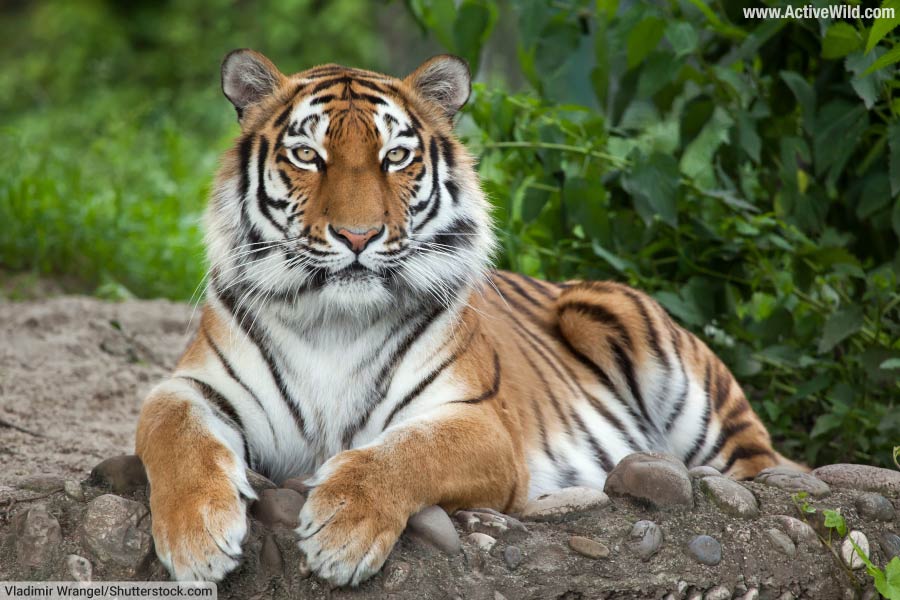
- Maximum speed: 64 km/h; 40 mph
- Scientific Name: Panthera tigris
- Family: Felidae
- Weight: 90-310 kg (200-683 lb), depending on the subspecies
- Where Found: Primarily in Asia, with significant populations in India, Russia, and Southeast Asia
- Conservation Status: Endangered
Tigers are the largest cat species, known for their pattern of dark vertical stripes on reddish-orange fur with a lighter underside. They are apex predators and primarily hunt ungulates such as deer and wild boar. Tigers are solitary and territorial animals.
Tigers are fast-moving animals, capable of reaching speeds of up to 40 mph, but only over short distances. If their initial charge is unsuccessful, they will break off the chase.
Discover More With Active Wild
You can find out more about this animal on this page: Tiger Facts
Spotted Hyena
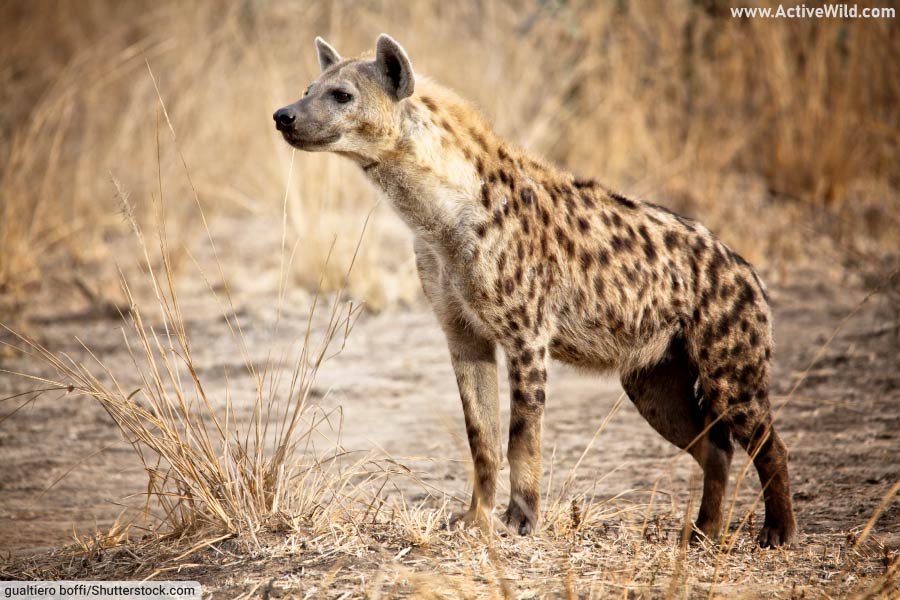
- Maximum speed: 60 km/h; 37 mph
- Scientific Name: Crocuta crocuta (Spotted Hyena)
- Family: Hyaenidae
- Weight: 40.5-81.7 kg (89-180 lb)
- Where Found: Sub-Saharan Africa
- Conservation Status: Least Concern
The spotted hyena is the largest of the four hyena species. This large, fast, African predator has powerful jaws and is highly social, living in large groups known as “clans”.
Hyenas communicate through a series of vocalizations, including the iconic “laugh,” which can indicate excitement or stress.
Despite being known as a scavenger, the spotted hyena is primarily a predator that hunts its own prey. With wildebeest, zebra, and gazelles on the menu, it’s lucky that the spotted hyena is itself no slouch, capable of reaching speeds approaching 40 mph.
Discover More With Active Wild
You can find out more about this animal on this page: Spotted Hyena Facts
Giraffe
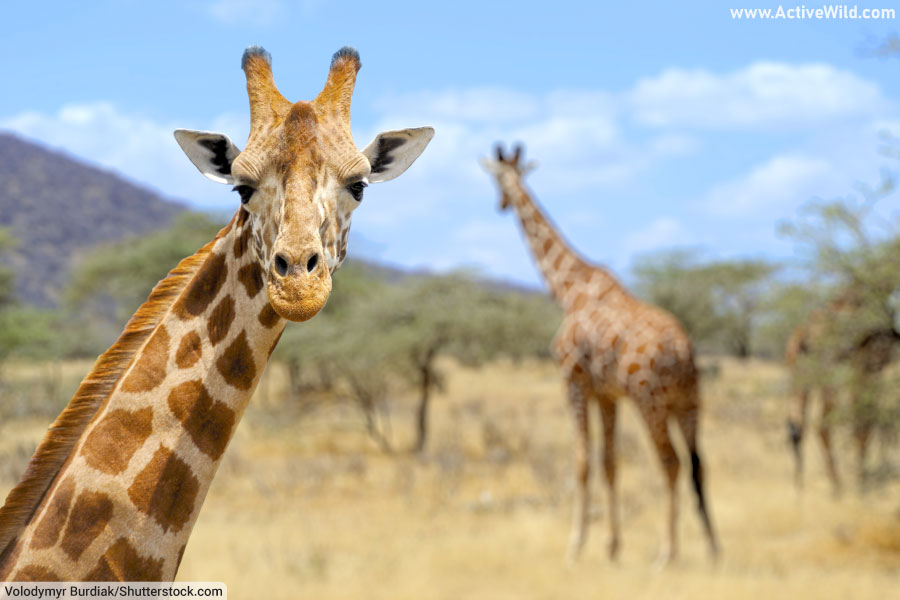
- Maximum speed: 60 km/h; 37 mph
- Scientific Name: Giraffa camelopardalis
- Family: Giraffidae
- Weight: 800-1,930 kg (1,763-4,255 lb)
- Where Found: Sub-Saharan Africa
- Conservation Status: Vulnerable
Giraffes are the tallest mammals on Earth, with their height being an adaptation for feeding on leaves and shoots in treetops. They are known for their long necks, long legs, and distinctive spotted patterns.
Giraffes live in groups, are non-territorial, and are known to have a complex social structure. Their long legs provide them with both speed and a powerful kick, both of which are used to evade predators.
Discover More With Active Wild
You can find out more about this animal on this page: Giraffe Facts
Discover More With Active Wild
Visit our main animals page for links to animal information and a complete guide to the animal kingdom: Animals
You can see more interesting animal lists on this page: Animal Lists

